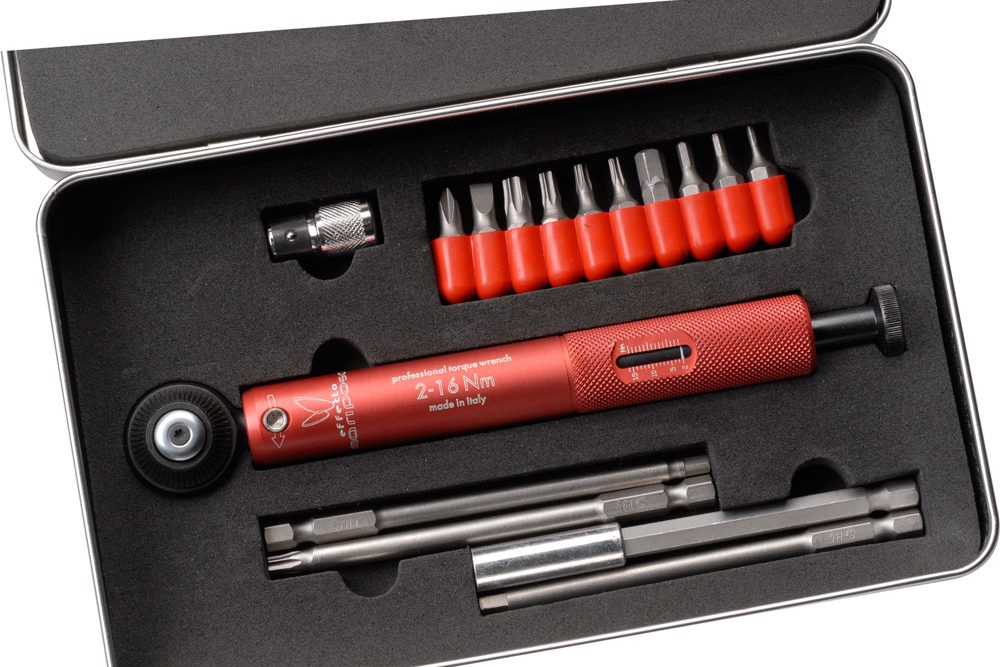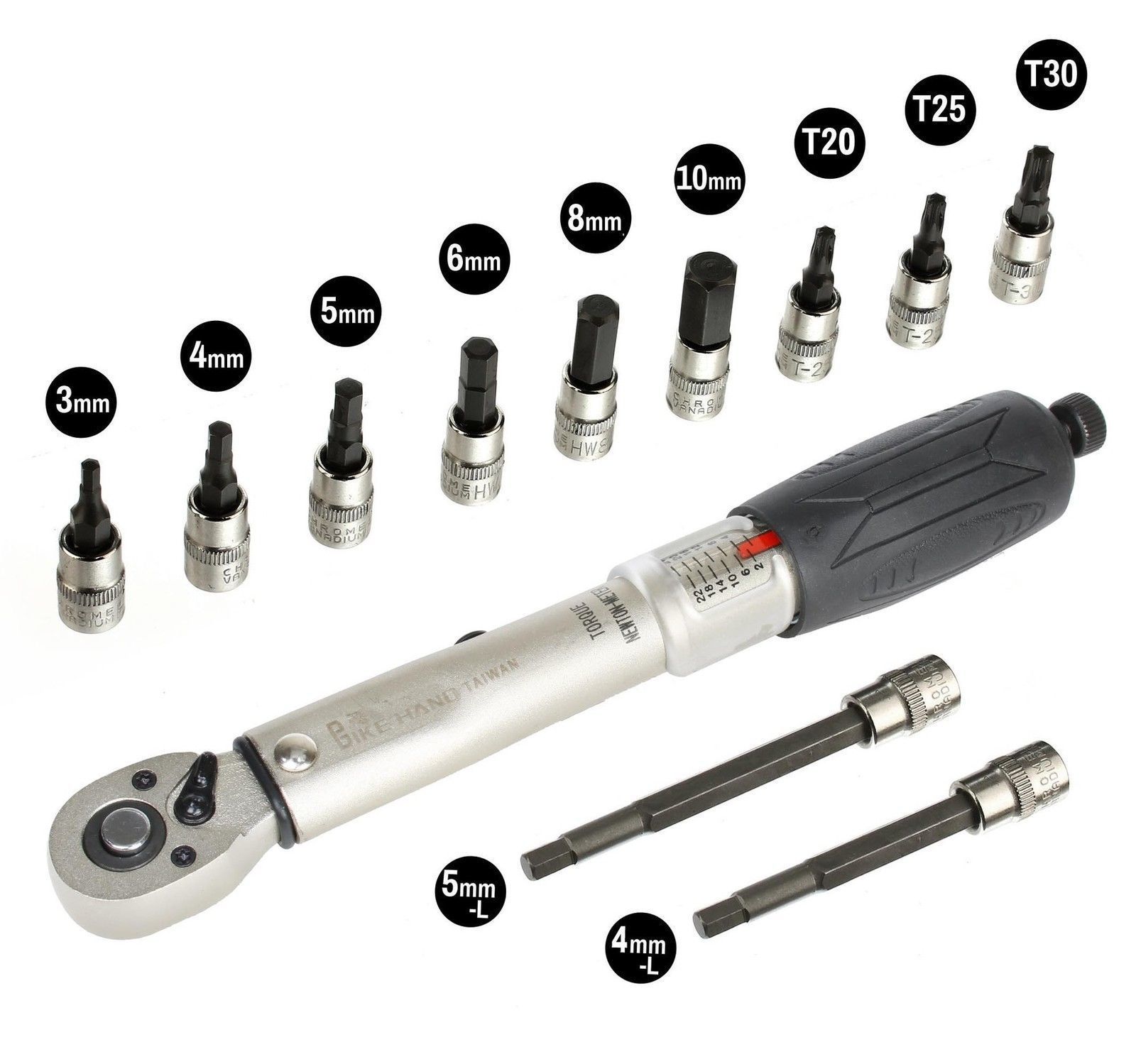Understanding Torque Wrenches and Their Importance in Bike Maintenance
A torque wrench for bike maintenance is a specialized tool designed to apply precise amounts of torque, or rotational force, to bolts and other threaded fasteners. This tool is crucial for bicycle owners and mechanics who want to ensure the safety and longevity of their bikes. By using a torque wrench, you can prevent overtightening and damaging delicate bike components while also ensuring proper assembly. This, in turn, helps maintain the structural integrity of the bike and enhances its overall performance.
Choosing the Right Torque Wrench for Your Bicycle
When selecting a torque wrench for bike maintenance, you will encounter various types, each with its advantages and disadvantages. Here are the most common torque wrenches and their key features:
Beam Torque Wrenches
Beam torque wrenches are simple, affordable, and do not require batteries. They feature a long, slender beam with a scale that displays the applied torque. However, they can be less accurate than other types and may be more challenging to read in poor lighting conditions.
Click Torque Wrenches
Click torque wrenches, also known as “clicker” wrenches, emit an audible click or a tactile “snap” when the desired torque is reached. They are highly accurate and easy to use, making them a popular choice among home mechanics and professionals alike. However, they may require occasional calibration to maintain their accuracy.
Digital Torque Wrenches
Digital torque wrenches offer a high degree of precision and feature an easy-to-read digital display. Some models even store torque values for future reference. However, they tend to be more expensive than other types and may require battery replacement or recharging.
For bicycle maintenance, click torque wrenches are often recommended due to their accuracy, ease of use, and affordability. However, budget-conscious cyclists may opt for a beam torque wrench, while those seeking advanced features may prefer a digital torque wrench.
Selecting the Appropriate Torque Range for Bicycle Components
Selecting the correct torque range for various bicycle components is crucial to ensure their proper function and longevity. Different components require specific torque values to prevent overtightening or under tightening. Here is a general torque range chart for bicycle maintenance:
- Pedals: 30-40 Nm (Newton-meters) for crank arm bolts
- Handlebars: 5-6 Nm for stem bolts
- Stems: 5-6 Nm for faceplate bolts
- Seatposts: 5-8 Nm for saddle clamp bolts
- Wheels: 40-45 Nm for quick-release skewers or thru-axle bolts
These values are approximate and may vary depending on the specific bicycle model and component manufacturer. Always refer to the manufacturer’s recommendations for the most accurate torque values.
Top Torque Wrench Recommendations for Bike Enthusiasts
Choosing the right torque wrench for bike maintenance is essential for any cycling enthusiast. Here are several highly-rated torque wrenches suitable for bicycle maintenance, with a mix of budget-friendly and high-end options:
Budget-Friendly Torque Wrenches
- Park Tool ATD-1
How to Accurately Measure and Apply Torque
Using a torque wrench for bike maintenance requires precision and care. To properly measure and apply torque, follow these steps:
- Select the appropriate torque range for the bicycle component you are working on. Refer to a general torque range chart for bicycle maintenance, which includes values for pedals, handlebars, stems, and seatposts.
- Adjust the torque wrench to the desired value within the selected torque range. Ensure that the wrench is set to a clockwise or counterclockwise direction, depending on the component’s orientation.
- Attach the appropriate socket size to the torque wrench’s drive end. This socket should fit snugly over the bolt or nut you want to tighten.
- Position the bicycle component in its proper location, ensuring it is correctly aligned and engaged with the mating surface.
- Apply gentle, steady pressure to the torque wrench, turning it in the appropriate direction. Do not use excessive force or abruptly jerk the wrench.
- Listen for the click or reach the digital reading. For click-type torque wrenches, continue tightening until you hear a distinct click or feel a tactile “snap.” For digital torque wrenches, tighten until the digital display reaches the desired torque value.
- Repeat the process for each component, ensuring you use the correct torque range for each one.
- Prevent rounding off bolts by never using a torque wrench on a bolt that is already stripped or damaged. Replace the damaged bolt before proceeding.
- Avoid overtightening components by adhering to the recommended torque values and using your torque wrench as a guide.
Maintaining Your Torque Wrench for Long-Term Use
Proper maintenance of your torque wrench is essential to ensure its accuracy and longevity. Follow these guidelines to maintain your torque wrench:
Cleaning your torque wrench
Clean your torque wrench after each use to remove dirt, debris, and moisture. Use a soft, dry cloth to wipe down the handle, drive end, and socket. Avoid using harsh chemicals or abrasive materials that can damage the wrench’s finish or components.
Calibrating your torque wrench
Regular calibration is crucial to maintain the accuracy of your torque wrench. As a general rule, calibrate your torque wrench at least once a year or whenever you notice a decrease in performance. Some torque wrenches may require professional calibration, while others can be calibrated at home using a certified test instrument. Always follow the manufacturer’s instructions for calibration.
Storing your torque wrench
Store your torque wrench in a cool, dry place away from direct sunlight and extreme temperatures. Hang the wrench from a peg or place it in a dedicated compartment to prevent accidental damage. Avoid storing your torque wrench in a toolbox or bag with other tools, as this can lead to inadvertent bumps or drops that may affect its accuracy.
By following these maintenance guidelines, you can ensure your torque wrench remains accurate and reliable for years to come. Regular cleaning, calibration, and proper storage will help maintain the wrench’s performance and extend its lifespan, ultimately benefiting your bicycle maintenance tasks.
The Role of Torque Wrenches in Bicycle Safety and Performance
Proper torque application is crucial for bicycle safety and performance. Using a torque wrench for bike maintenance ensures that components are tightened to the correct specifications, preventing damage and potential accidents. Here’s how using a torque wrench can benefit your bicycle:
Preventing damage to delicate components
Bicycles often have delicate components, such as carbon fiber parts, that can be easily damaged by overtightening. A torque wrench helps prevent this by allowing you to apply precise amounts of torque, reducing the risk of component failure and costly repairs.
Improving bike performance
Properly tightened components contribute to optimal bike performance. For instance, correctly torqued handlebars, stems, and seatposts ensure a comfortable and secure riding position, while accurately tightened pedals enhance power transfer and stability. A torque wrench ensures that all components are securely fastened, maximizing your bike’s performance and safety.
Extending component lifespan
Over or under tightening components can lead to premature wear and failure. By using a torque wrench, you can prolong the lifespan of your bicycle’s components, saving you time and money on replacements. Regularly checking and adjusting torque values can help maintain your bike’s overall condition and performance.
Reducing the risk of accidents
Improperly tightened components can cause accidents, especially during high-stress situations like steep descents or hard cornering. A torque wrench minimizes this risk by ensuring that all components are tightened to the manufacturer’s recommended specifications, enhancing your bike’s safety and reliability.
In summary, using a torque wrench for bike maintenance is essential for ensuring safety, improving performance, extending component lifespan, and reducing the risk of accidents. By incorporating a torque wrench into your bicycle maintenance routine, you can protect your investment, enhance your riding experience, and promote long-term bicycle health.
Frequently Asked Questions About Torque Wrenches for Bicycles
Q: Why do I need a torque wrench for my bike?
A: A torque wrench for bike maintenance ensures proper assembly, prevents overtightening, and protects delicate components from damage. This helps maintain safety, improve performance, and extend the lifespan of your bicycle’s parts.
Q: What is the difference between beam, click, and digital torque wrenches?
A: Beam torque wrenches are simple and affordable but can be less accurate than other types. Click torque wrenches emit an audible click when the desired torque is reached, while digital torque wrenches provide a digital readout. Click and digital torque wrenches are typically more accurate than beam wrenches.
Q: How often should I calibrate my torque wrench?
A: Calibrate your torque wrench at least once a year or whenever you notice a decrease in performance. Always follow the manufacturer’s instructions for calibration to ensure accuracy.
Q: Can I use a car torque wrench for my bike?
A: While it is possible to use a car torque wrench for bicycle maintenance, it may not be ideal. Bicycle components often require lower torque values than car components, and many car torque wrenches do not offer the necessary precision for bicycle maintenance. A torque wrench specifically designed for bicycles is recommended.
Q: What is the correct torque range for bicycle components?
A: The correct torque range for bicycle components varies depending on the specific component. A general torque range chart for bicycle maintenance includes values for pedals, handlebars, stems, and seatposts. Always refer to the manufacturer’s recommendations for the most accurate torque values.
Q: How can I prevent rounding off bolts when using a torque wrench?
A: To prevent rounding off bolts, never use a torque wrench on a bolt that is already stripped or damaged. Instead, replace the damaged bolt before proceeding. Additionally, use the proper socket size and avoid using excessive force or abruptly jerking the wrench.







